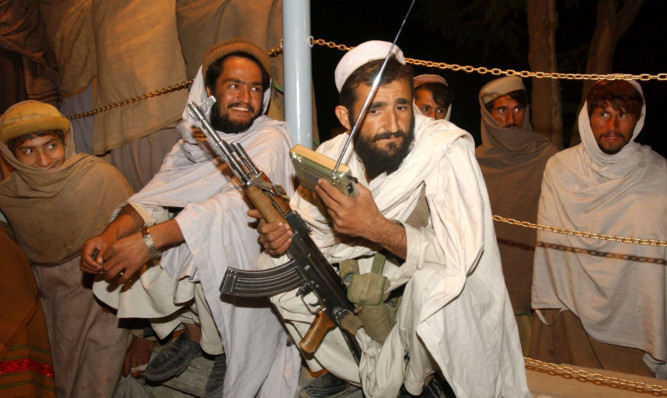
A secret report has revealed how the British Government won hearts and minds in war-torn Afghanistan with a radio soap based on The Archers.
Hard-line Taliban leaders were among the 14 million regular listeners who tuned in to New Home, New Life, according to a previously-restricted report.
The document, prepared for the Ministry of Defence, reveals Whitehall poured hundreds of thousands every year into the radio drama because ministers were convinced of its power to change lives.
And the 21-page report seen by The Sunday Post suggests soap operas could allow the government to get its messages across in other warzones.
“As radio is a key information tool in states with poor infrastructure,” the report says, “soaps should be a central feature of influence campaigns.”
Afghanistan’s New Home, New Life is the country’s most popular radio show after launching in 1994.
Scriptwriters for The Archers flew out to advise and develop the soap with Afghan writers and famous actors displaced by the civil war.
Listeners were gripped by storylines, from the village of Bar Killi, of blood feuds, landmines and opium addiction.
Journalist and broadcaster Zarghuna Kargar, 32, whose father Akbar was one of the original writers, said: “At that time in Afghanistan, radio was the only means of connection and entertainment. It touched people’s lives.
“It was giving out information in a very subtle way but it was popular because it was based on the lives of characters in Afghan villages, who people could relate to. The impact was quite huge.”
The Foreign Office gave £300,000 towards the programme in 2007-2008 and a “similar figure” in the previous 14 years, according to the 2009 report.
It also gave money for promoting particular educational storylines, including £200,000 through a “counter-narcotics” unit to discourage Afghan farmers from growing deadly heroin poppies.
However, the report reveals the move was a failure because of “conflicting advice” from UK, US and Afghan governments over how to get farmers to grow alternative crops.
Other storylines were more successful even changing the minds of Taliban chiefs. One plot tackling a woman’s forced marriage to end a bitter revenge cycle provoked an angry response from Taliban leader Mullah Omar, who condemned the practice as “un-Islamic”.
The report reads: “Other members of the Taliban are known to have listened. Afghan government figures are also known to listen in. One kept a British diplomat waiting for 15 minutes while he heard the end of an episode.”
The soap opera was so successful, versions of it have been exported to other war-ravaged countries such as Rwanda, Albania and Cambodia.
Dr Cynthia McVey, the former head of psychology at Glasgow Caledonian University, described drama as a “powerful tool” to capture hearts and minds. She said: “It is much easier to absorb the information through listening to drama than reading a manual or listening to someone giving a lecture.”

Enjoy the convenience of having The Sunday Post delivered as a digital ePaper straight to your smartphone, tablet or computer.
Subscribe for only £5.49 a month and enjoy all the benefits of the printed paper as a digital replica.
Subscribe